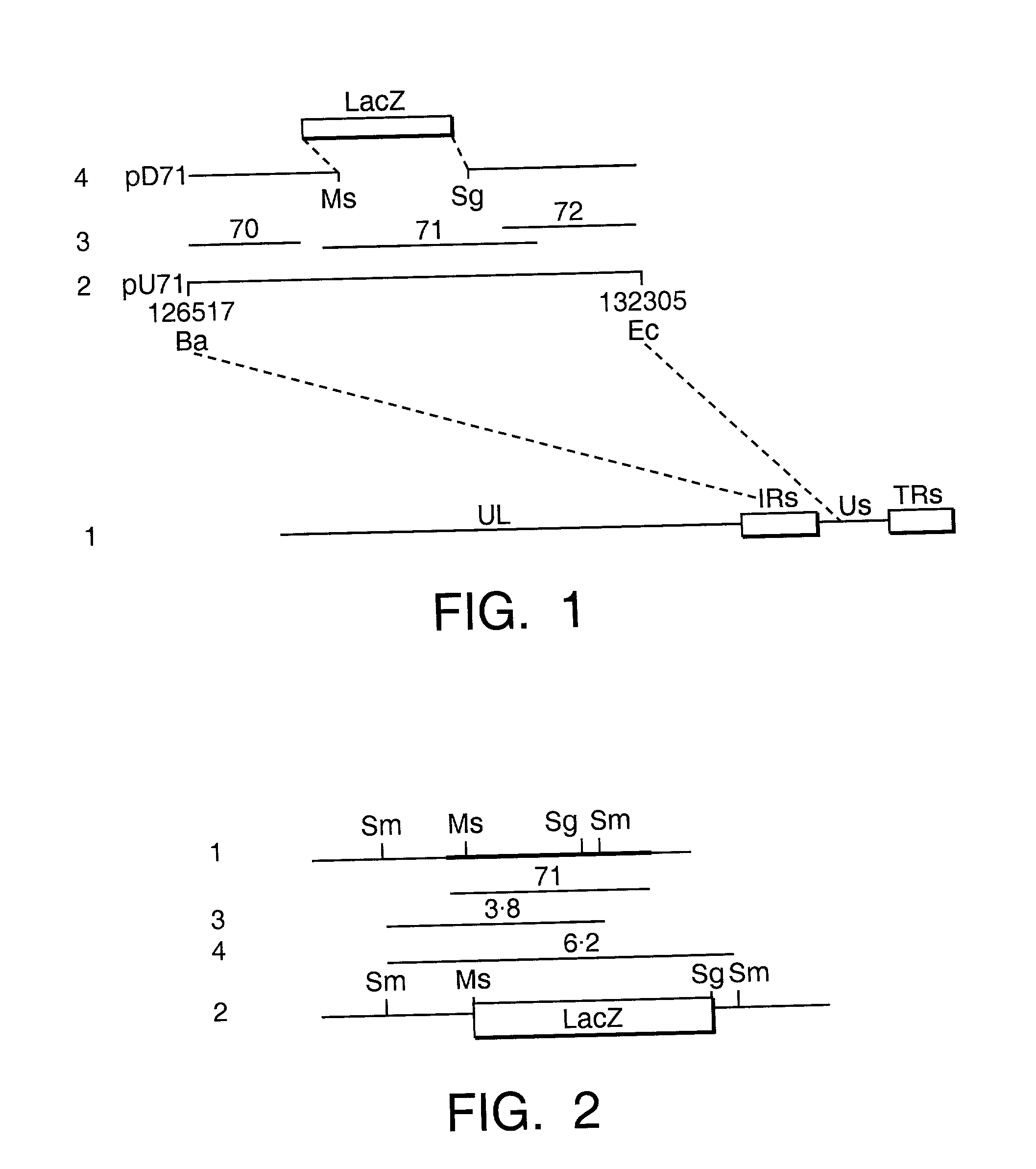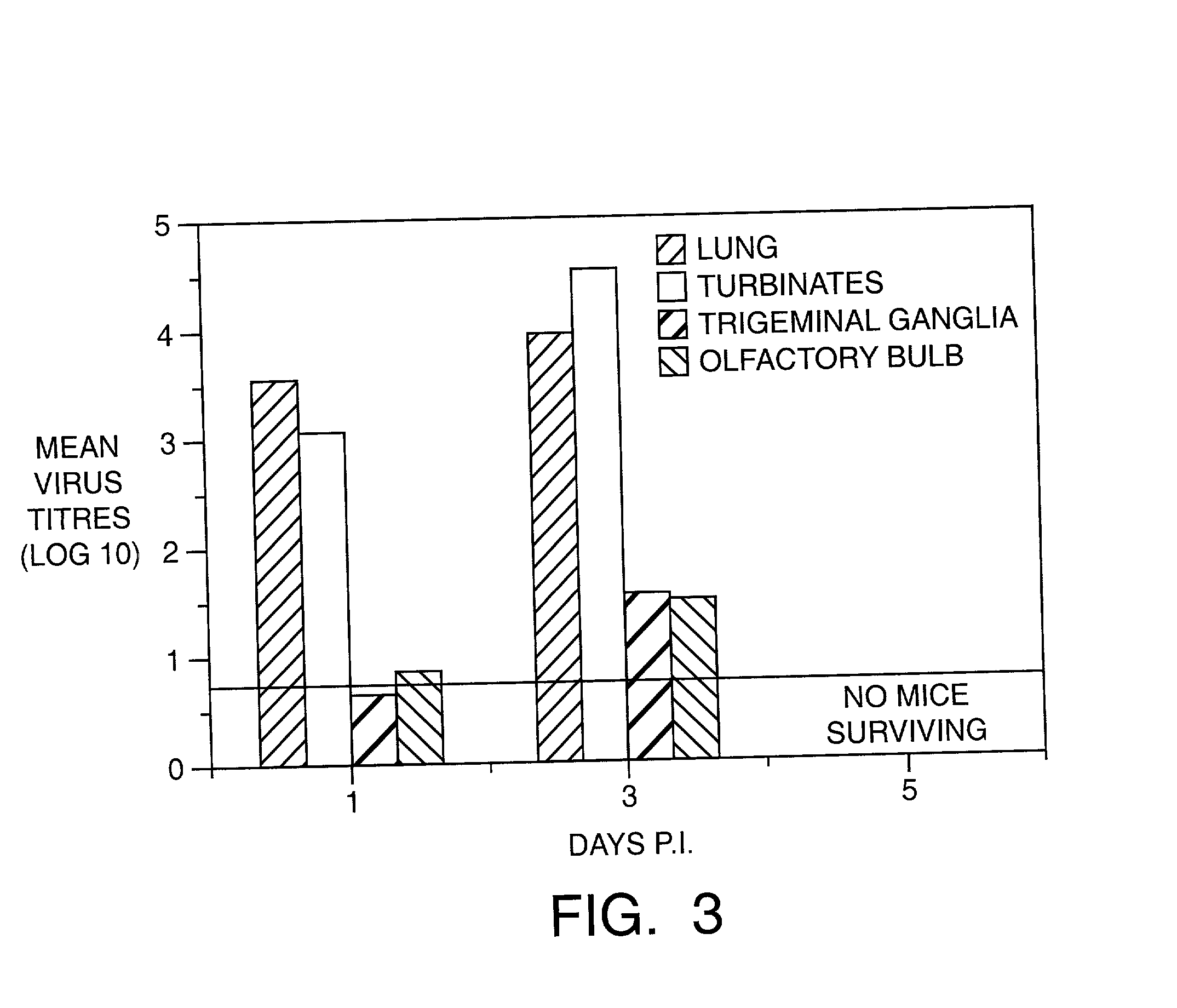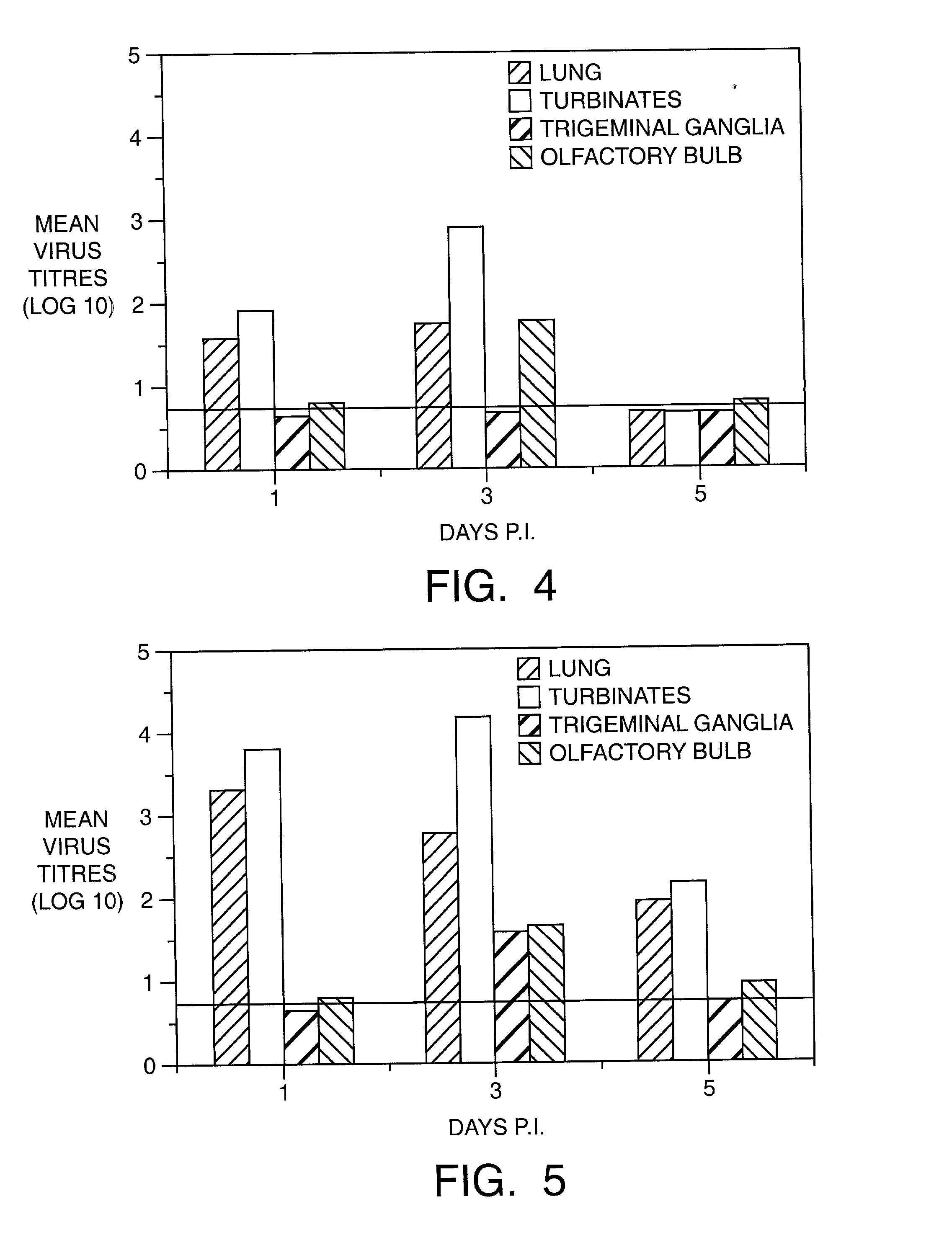Recombinant equine herpesvirus type 1 (EHV-1) comprising a dysfunctional gene 71 region and use thereof as a vaccine
a technology of equine herpesvirus and recombinant equine, which is applied in the field of vaccine formulation, can solve the problems of high cost of production, inactivated vaccines generally induce a low level of immunity, and 1 is responsible for significant economic losses in the equin
- Summary
- Abstract
- Description
- Claims
- Application Information
AI Technical Summary
Benefits of technology
Problems solved by technology
Method used
Image
Examples
example 1
[0054] Briefly, to clone the fragment which contains the gene 71, equine dermal cells (NBL-6) were infected with EHV-1 strain Ab4 (Gibson J. S. et al. Arch. Virol. 124 pp. 351-366 (1992)) at 0.1 pfu / cell and the progeny virions were purified by centrifugation on 5-55% (w / v) sucrose gradients as described by Dumas et al. J. Gen. Virol. 47 pp. 233-235 (1980)). EHV-1 Ab4 genomic DNA was extracted from the purified virions and digested with a range of restriction enzymes. A relevant fragment, for example, the 5.8-kb BamHI / EcoRI fragment (residues 126,517 to 132,305) was cloned into the vector pUC19 so that a plasmid, pU71 containing the 5.8-kb BamHI / EcoRI fragment inserted at BamHI / EcoRI sites, was constructed (FIG. 1). To construct a deletion plasmid, the cloned plasmid was digested by restriction enzymes which cut at unique sites to remove most of the coding sequence of gene 71. The flanking sequences were religated with complementary synthetic oligonucleotides containing an unique Sp...
example 2
[0055] For generation of virus mutants, 1-2 .mu.g of EHV-1 Ab4 DNA was cotransfected into BHK21 / C13 cells (MacPherson I. and Stoker M. G. Virology 16 pp. 147-151 (1962)) with varying amounts of the linearized deletion plasmid pD71, (0.2 to 4 .mu.g, an approximately 2- to 20-fold molar excess) in the presence of carrier calf thymus DNA using the calcium phosphate precipitation / DMSO method described by Stow N. D., and Wilkie N. M., J. Gen. Virol. 33 pp. 447-458 (1976). The cells were incubated at 37.degree. in Eagle's medium containing 5% newborn calf serum. When the c.p.e. was widespread, the virus was harvested and titrated on BHK21 / C13 cells under methylcellulose. Two days after the infection, a further 2 ml of methylcellulose medium containing 0.7 mg / ml X-gal was added to each plate. Individual blue plaques were isolated for further rounds of plaque purification. A mutant with a lacZ substitution was isolated: ED71 with a deletion of 1811 bp from the 2393 bp gene 71 ORF. The delet...
example 3
[0056] Growth characteristics of the mutant in tissue culture was also investigated. Monolayers of BHK21 / C13 cells were separately infected at a multiplicity of infection (m.o.i.) of 5 pfu / cell and 0.01 pfu / cell with wild-type virus and the deletion and substitution mutant ED71. The culture was harvested and virus was released by sonication at intervals throughout a 72 hour period. Virus titers were measured by plaque assay and the growth patterns were compared with those of wild-type virus. The plaque morphology of the mutants was not obviously different from the wild-type virus plaques.
[0057] Mutant ED71 grew more slowly and the final yield was reduced by about 5-fold compared with that of wild-type virus. Similar results were seen at high multiplicity (data not shown), although the reduction in the yield of the ED71 mutant was less than that at low multiplicity. To determine whether the mutant was temperature sensitive or had a host-range phenotype, they were grown at a high m.o....
PUM
| Property | Measurement | Unit |
|---|---|---|
| Time | aaaaa | aaaaa |
| Time | aaaaa | aaaaa |
| Time | aaaaa | aaaaa |
Abstract
Description
Claims
Application Information
 Login to View More
Login to View More - R&D
- Intellectual Property
- Life Sciences
- Materials
- Tech Scout
- Unparalleled Data Quality
- Higher Quality Content
- 60% Fewer Hallucinations
Browse by: Latest US Patents, China's latest patents, Technical Efficacy Thesaurus, Application Domain, Technology Topic, Popular Technical Reports.
© 2025 PatSnap. All rights reserved.Legal|Privacy policy|Modern Slavery Act Transparency Statement|Sitemap|About US| Contact US: help@patsnap.com



